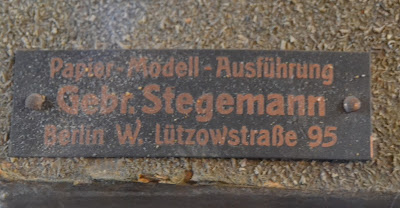While on vacation with the family in Berlin I managed to throw in a visit to the
German museum of technology. Germany is well known as a producer of industrial products and the museum reflects that. There are sections for aircraft, space, cars, railways, shipping to name a few. Unfortunately the historical brewery was closed during my visit. I didn't visit all parts of the museum with the same intensity, but spent quite some time in the railway, photography and aircraft sections. A full day is easily spent enjoying the museum.
 |
| Almost idyllic atmosphere outside one of the two large loco sheds containing most of the railway collections. |
The museum is placed in several buildings on the area of a closed Berlin railway station. Some of the buildings are original railway buildings (two loco sheds and an impressingly long goods shed) as well as new buildings. I liked that the exhibits in the loco sheds were not restored to a shiny finish. Most of the locos and wagons looked well used reflecting their age and helping to tell their history. In the car section everything was sparkling shiny making that exhibition more sterile, in my view at least.
 |
| A German Brigade wagon from the military 600 mm. railways. This one is fitted with a tarpaulin cover. |
 |
| It is almost self evident that a German technical museum should display one of the well known Brigadeloks and this museum indeed has one. Here a somewhat rebuilt example by the Polish State Railways PKP Tx 203 (Borsig 10380/1919). |
Besides all the 1:1 objects the museum relies on a large number of models to give the visitor an idea of how technology was used and to show a wider variety of items than would be possible in full scale. All the models are to a very high quality and certainly of museum quality. Some of them are indeed museum items with a fascinating history themselves. More on that in a later post.
 |
| 750 mm loco on standard gauge wagon and 600 mm loco on its own track. The 750 mm. loco is HF 2822, a KDL 11 type loco built by Franco Belge in 1944. The 600 mm. loco is a Henschel 'Riesa' (28514/1949) |
Among other historical sites in Berlin I also visited the Commonwealth War Graves on Heerstrasse. I thought it fitting to pay my respect to some of the young men that helped fight Nationalsocialism and ensure a democratic Europe. Thank you.


















